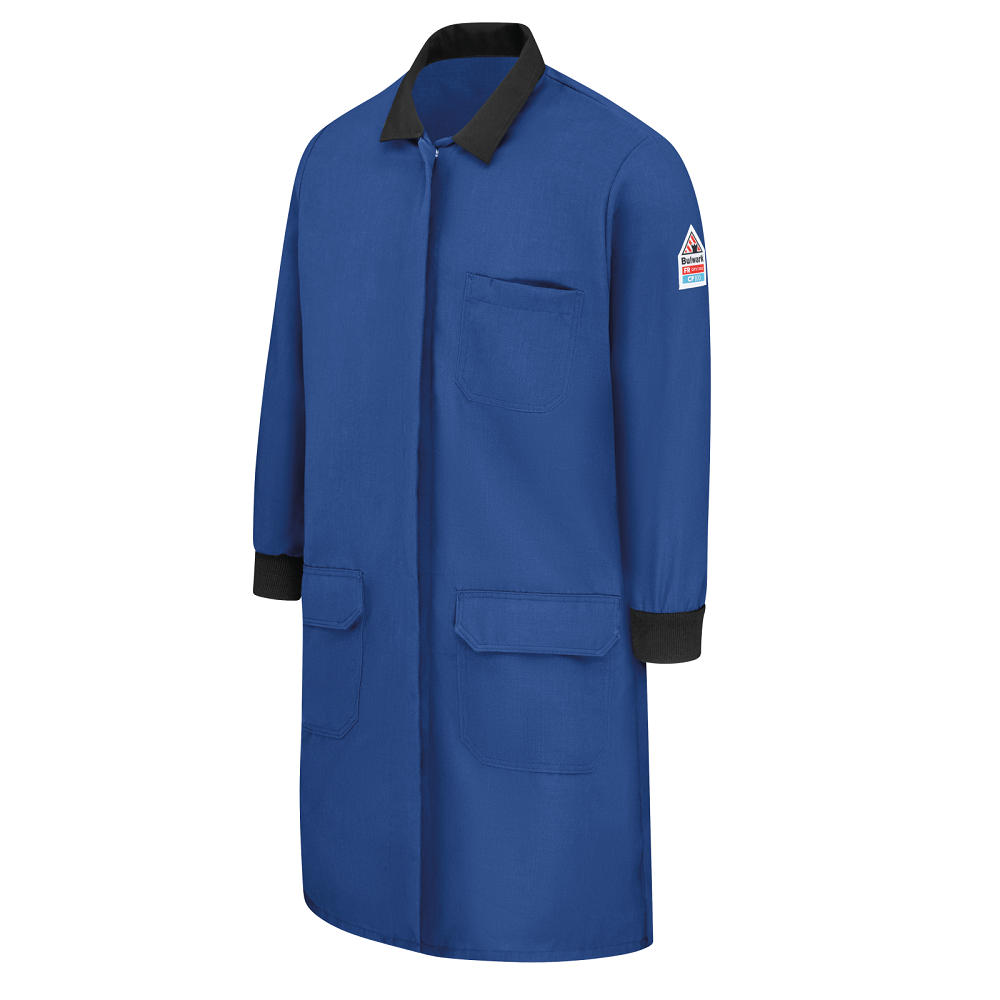
In scientific and medical fields, lab coats are more than just a part of the uniform. They serve a vital role in ensuring both safety and professionalism within a laboratory environment. Whether you are working in a chemistry lab, performing medical research, or conducting biological experiments, a lab coat is an indispensable tool. This article explores the various purposes of lab coats, their benefits, and the key factors to consider when choosing the right one for your needs.
Understanding the Purpose of Coats
Protection from Hazards
The primary purpose of a lab coat is to protect the wearer from potential hazards. Labs often contain various chemicals, biohazards, and other materials that can be harmful if they come into contact with skin or clothing. Lab coats provide a barrier that can help prevent spills, splashes, and other accidents from causing injury or contamination.
For example, in a chemistry lab, a lab coat made of durable, chemical-resistant material can safeguard against acid splashes or solvent spills. Similarly, in a biological laboratory, lab coats help protect against contamination from pathogens or biological samples. Wearing a lab coat is an essential precaution that contributes to a safer working environment.
Maintaining Cleanliness
Another important function of lab coats is to maintain cleanliness in the lab. They can absorb spills and keep lab clothing clean from dust and stains. By wearing a lab coat, researchers and technicians can prevent accidents that could lead to contamination of experiments or samples.
Moreover, lab coats can be easily cleaned or replaced as they become soiled. This ability to maintain hygiene is particularly vital in clinical or research settings, where the results of experiments or tests depend on sterile conditions. Cleanliness is not only crucial for personal safety but also for ensuring the accuracy of scientific data.

Establishing Professionalism
Creating a Unified Look
Lab coats also contribute to professionalism in the workplace. When everyone in a lab wears a lab coat, it creates a unified and cohesive appearance. This consistency can enhance the credibility of the laboratory and its personnel in the eyes of external observers, such as clients, patients, or collaborators.
A neat and polished look fosters a professional atmosphere. It shows that the staff takes their work seriously and is committed to maintaining high standards within the lab. For students and trainees, wearing a lab coat helps instill a sense of responsibility and respect for the scientific process.
Signaling Authority and Expertise
Wearing a lab coat can also signal authority and expertise. In many scientific fields, lab coats are associated with professionals who possess specific knowledge and skills. When a researcher, technician, or student wears a lab coat, it conveys a sense of seriousness and readiness to engage in professional tasks.
This perception can have practical implications. For instance, students or interns wearing lab coats may be taken more seriously by their peers and supervisors, facilitating smoother collaboration. Additionally, patients visiting a healthcare facility often feel reassured when they see medical professionals in lab coats, as it signifies competence and trustworthiness.

Types of Lab Coats
Materials and Fabrics
Lab coats come in a variety of materials, each designed for specific purposes. The most common fabric for lab coats is cotton, known for its comfort and breathability. Cotton lab coats are suitable for general use and non-hazardous environments. However, they might not offer sufficient protection against chemical spills or fire hazards.
For labs dealing with hazardous materials, lab coats made from synthetic fibers such as polyester or special chemical-resistant materials are preferable. These fabrics provide enhanced durability and can offer additional protection against chemicals, flames, and static electricity. When selecting a lab coat, it is essential to consider the types of hazards in the lab environment and choose a material that offers appropriate protection.
Length and Fit
Lab coats also come in various lengths and fits. Typically, they are available in three lengths: knee-length, mid-thigh, and hip-length. Each length has its benefits, with longer coats providing more coverage. The choice of length can depend on personal preference or specific lab requirements.
Fit is another important factor to consider. Lab coats should allow for good mobility while being comfortable enough for extended wear. Styles vary from loose-fitting to tailored options, and the right fit can vary from person to person based on individual needs. Ensuring that a lab coat fits well allows for better movement and comfort during tasks.

Care and Maintenance of Coats
Proper Washing Techniques
Maintaining the cleanliness of lab coats is crucial for their effectiveness. Proper washing techniques ensure that the protective qualities of the fabric are retained. It is important to follow the manufacturer’s care instructions when washing to avoid damaging the coat.
Most lab coats can be machine washed. Using a mild detergent and warm water is recommended for general cleaning. However, when dealing with hazardous materials, additional care may be necessary. Specialized cleaners may be required for decontamination. Regular washing not only keeps the coat free of dirt and stains but also minimizes the risk of cross-contamination between lab users.
Regular Inspection
In addition to washing, regular inspections of lab coats are essential. Checking for signs of wear and tear helps maintain safety standards. Look for frayed edges, holes, or discoloration that might indicate a compromised area. If damage is detected, it is crucial to repair or replace the coat to maintain protection levels.
Noticing these details can prevent future accidents or contamination issues. By establishing a routine for inspecting lab coats, you ensure that they continue to provide the necessary protection while contributing to a professional appearance.

Choosing the Right Coat
Determining the Right Style
Selecting the right lab coat requires considering the specific needs of your lab environment. If you are in a chemistry lab, a long-sleeve coat with chemical-resistant fabric may be necessary. Alternatively, a lightweight cotton coat may suffice in a more general research setting.
Identifying the needs of your work environment helps you determine which style and features are most appropriate. Create a list of necessary features, such as pockets, length, and material, to assist you in making an informed decision. By choosing the right coat, you are investing in your safety and comfort.
Budgeting for a Quality Lab Coat
When purchasing a lab coat, it is essential to consider your budget. Investing in a quality lab coat is paramount, as it serves a significant purpose in maintaining safety and professionalism. While some basic models may be less expensive, they may not offer the same level of protection or durability as higher-quality options.
If you are part of an institution or organization, check if they provide lab coats or offer guidelines on where to purchase them. Educational discounts may apply, which could help you save money while acquiring a reliable coat. Prioritizing quality over cost will ultimately benefit your safety and comfort in the lab.

The Role of Coats in Professional Development
Confidence and Professionalism
Wearing a lab coat can significantly boost a person’s confidence in their professional abilities. It creates a visual cue that signifies readiness to engage in tasks, spurring motivation and a sense of responsibility. The mere act of donning a lab coat can change how individuals perceive themselves within their roles.
Moreover, lab coats help shape the way others perceive you in the workplace. Colleagues and supervisors may react differently when they see you in professional attire versus casual wear. This perception can lead to increased trust and respect among peers, facilitating collaboration in research or projects.
Setting Standards for Future Generations
As professionals adopt and consistently wear lab coats in laboratory environments, they send a message to future generations about the importance of professionalism. Young interns, students, and newcomers often look up to those already established in their fields. When they see mentors and experienced professionals in lab coats, it reinforces the standard of professionalism expected in scientific practices.
By setting high standards in appearance and behavior, experienced professionals can positively influence newcomers. This attitude fosters a culture of respect, responsibility, and professionalism in laboratory settings, essential traits for the success of scientific endeavors.
Conclusion: The Importance of Lab Coats in the Laboratory
Lab coats play a critical role in ensuring safety, cleanliness, and professionalism in laboratory environments. They protect the wearer from hazardous materials while helping to maintain an organized and hygienic workspace. The choice of fabric, fit, and style can significantly impact how effectively a lab coat serves its purpose.
By following proper care and maintenance practices, lab coats can last longer and continue to offer the required protection. It is essential to choose the right lab coat that fits workplace needs, enhances comfort, and projects professionalism.
As you enter the laboratory, always remember the important role that a lab coat plays in your safety and professionalism. These garments are not just a uniform but a commitment to maintaining standards in science and research. Embrace the responsibilities that come with being a part of a scientific community, and let your lab coat represent your dedication and professionalism in the field!
